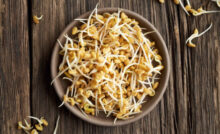Conquer Joint and Muscle Pain Naturally: The Ayurvedic Path to Lasting Relief and Wellness


Explore Ayurvedic solutions for joint and muscle pain with natural remedies and holistic wellness practices.
Discover the holistic approach of Ayurveda to effectively manage joint and muscle pain. Embrace natural remedies, balanced diets, and therapeutic practices for lasting relief and overall wellness.
Ayurveda, the ancient system of medicine that originated in India over 5,000 years ago, offers a holistic approach to health and wellness. It emphasizes the balance of mind, body, and spirit and seeks to address the root causes of ailments rather than just treating the symptoms. Joint and muscular pain, common issues faced by many, can be effectively managed through Ayurvedic practices. This long description explores the principles of Ayurveda, the causes of joint and muscular pain, and the Ayurvedic remedies and lifestyle changes that can help alleviate these discomforts.
Understanding Ayurveda
Ayurveda is based on the belief that health and wellness depend on a delicate balance between the mind, body, and spirit. The primary aim of Ayurveda is to promote good health, not just fight disease. According to Ayurvedic principles, the universe is composed of five elements: air, water, fire, earth, and space. These elements combine to form three doshas, or life forces: Vata, Pitta, and Kapha. Each person has a unique combination of these doshas, which determines their constitution (Prakriti) and influences their physical, mental, and emotional characteristics.
- Vata Dosha: Composed of air and space, Vata governs movement and is responsible for bodily functions such as breathing, blood flow, and the elimination of waste. When Vata is in balance, it promotes creativity and vitality. Imbalance can lead to anxiety, dry skin, constipation, and joint pain.
- Pitta Dosha: Made up of fire and water, Pitta controls digestion, metabolism, and energy production. Balanced Pitta results in contentment and intelligence, while an imbalance can cause anger, ulcers, inflammation, and muscular pain.
- Kapha Dosha: Consisting of earth and water, Kapha provides structure and stability to the body. It governs growth, lubricates joints, and maintains immunity. Balanced Kapha fosters love and forgiveness, whereas an imbalance can lead to greed, congestion, obesity, and joint stiffness.
Causes of Joint and Muscular Pain
Joint and muscular pain can arise from various factors, and Ayurveda seeks to identify and address these root causes. Some common reasons for these pains include:
- Dosha Imbalance: An imbalance in the doshas can lead to inflammation, stiffness, and pain in the joints and muscles. Vata imbalance often results in dryness and cracking of joints, while Pitta imbalance causes inflammation and burning sensations. Kapha imbalance can lead to swelling and heaviness.
- Poor Digestion: Ayurveda emphasizes the importance of a healthy digestive system (Agni). Poor digestion can lead to the accumulation of toxins (Ama) in the body, which can deposit in the joints and muscles, causing pain and stiffness.
- Diet and Lifestyle: A diet high in processed foods, lack of physical activity, and stress can contribute to joint and muscular pain. Ayurveda recommends a balanced diet and a lifestyle that aligns with one’s dosha to maintain overall health.
- Aging: Natural wear and tear of joints and muscles occur with aging. Ayurvedic practices aim to slow down this degeneration and promote healthy aging.
- Injuries: Past injuries or trauma to the joints and muscles can lead to chronic pain. Ayurvedic treatments focus on healing and rejuvenation.
Ayurvedic Remedies for Joint and Muscular Pain
Ayurveda offers a variety of remedies to manage joint and muscular pain, including herbal treatments, dietary changes, lifestyle modifications, and therapeutic practices.
Herbal Treatments
- Ashwagandha: Known for its anti-inflammatory and analgesic properties, Ashwagandha helps reduce joint and muscular pain. It also strengthens the muscles and improves overall vitality.
- Turmeric: Curcumin, the active compound in turmeric, has powerful anti-inflammatory and antioxidant properties. Regular consumption of turmeric can alleviate pain and inflammation.
- Boswellia (Shallaki): This herb is effective in reducing inflammation and improving joint mobility. It is commonly used in Ayurvedic formulations for arthritis and joint pain.
- Guggulu: Known for its anti-inflammatory and rejuvenating properties, Guggulu helps in reducing joint pain and stiffness. It also aids in detoxification and weight management.
- Ginger: Ginger has potent anti-inflammatory properties and can be consumed as a tea or added to meals to help reduce pain and inflammation.
- Castor Oil: Massaging joints with warm castor oil can relieve pain and stiffness. It is also beneficial for detoxification and improving digestion.
Dietary Changes
- Anti-inflammatory Diet: Include foods with anti-inflammatory properties such as turmeric, ginger, garlic, and leafy greens. Avoid processed foods, refined sugars, and excessive intake of red meat.
- Balanced Diet: Follow a diet that suits your dosha. For example, Vata individuals should consume warm, cooked foods and avoid cold, dry foods. Pitta individuals should eat cooling foods like cucumber and leafy greens, and avoid spicy, acidic foods. Kapha individuals benefit from light, warming foods and should avoid heavy, oily foods.
- Hydration: Proper hydration is essential for joint lubrication and muscle function. Drink plenty of water and herbal teas throughout the day.
- Detoxification: Periodic detoxification can help eliminate toxins from the body. Ayurvedic practices like Panchakarma are effective in detoxifying and rejuvenating the body.
Lifestyle Modifications
- Regular Exercise: Engage in regular physical activity suitable for your dosha. Yoga, walking, and swimming are excellent choices. Avoid strenuous exercises that can aggravate joint and muscle pain.
- Stress Management: Practice stress-reducing techniques such as meditation, deep breathing, and yoga. Stress can exacerbate pain and inflammation.
- Adequate Rest: Ensure you get sufficient rest and sleep. Overexertion can worsen joint and muscle pain.
- Posture and Ergonomics: Maintain good posture and use ergonomic furniture to reduce strain on joints and muscles, especially if you have a sedentary job.
Therapeutic Practices
- Abhyanga (Oil Massage): Regular self-massage with warm herbal oils can relieve pain, improve circulation, and promote relaxation. Sesame oil is commonly used for Vata, coconut oil for Pitta, and mustard oil for Kapha.
- Panchakarma: This comprehensive detoxification and rejuvenation therapy involves various treatments such as Abhyanga, Shirodhara, and Basti. It helps eliminate toxins, balance the doshas, and improve overall health.
- Swedana (Steam Therapy): Swedana involves sweating through steam therapy, which helps reduce pain, stiffness, and inflammation. It also promotes detoxification.
- Basti (Enema Therapy): Basti is a cleansing therapy that involves the administration of herbal enemas. It is particularly effective in treating Vata-related joint and muscle issues.
- Herbal Poultices: Applying warm herbal poultices (Pinda Sweda) to the affected areas can reduce pain and inflammation. Common ingredients include rice, herbs, and milk.
Case Studies and Success Stories
Ayurveda has numerous success stories where individuals have effectively managed joint and muscular pain through its practices. Here are a few examples:
- Rheumatoid Arthritis: A middle-aged woman suffering from rheumatoid arthritis found relief through Ayurvedic treatments. She underwent Panchakarma therapy, including Virechana (purgation) and Vasti (enema), followed by regular Abhyanga and herbal medications like Ashwagandha and Shallaki. Over six months, her pain and inflammation significantly reduced, and she regained mobility.
- Osteoarthritis: An elderly man with osteoarthritis in his knees experienced considerable improvement through Ayurvedic interventions. He followed a Kapha-pacifying diet, practiced gentle yoga, and received weekly Abhyanga with herbal oils. Herbal supplements like Guggulu and Turmeric helped manage pain and inflammation. After three months, his pain decreased, and his joint function improved.
- Muscular Pain from Overexertion: A young athlete dealing with chronic muscular pain due to overexertion benefited from Ayurvedic treatments. He incorporated Ashwagandha and Ginger into his diet, practiced yoga and Pranayama (breathing exercises), and received regular Swedana therapy. His muscular pain reduced, and his recovery time improved.
Ayurveda offers a holistic and natural approach to managing joint and muscular pain. By addressing the root causes, such as dosha imbalances, poor digestion, and lifestyle factors, Ayurvedic practices can provide effective and sustainable relief. Herbal treatments, dietary changes, lifestyle modifications, and therapeutic practices like Abhyanga and Panchakarma play a significant role in alleviating pain and promoting overall health.
Embracing Ayurveda requires a commitment to understanding one’s unique constitution and making lifestyle changes that align with Ayurvedic principles. Consulting with a qualified Ayurvedic practitioner can provide personalized guidance and ensure the most effective treatment plan.
Incorporating Ayurveda into daily life not only helps manage joint and muscular pain but also enhances overall well-being. By fostering a balanced mind, body, and spirit, Ayurveda paves the way for a healthier and more harmonious life.
Recent Posts
One Sleepless Night Can Weaken Your Immunity and Trigger Inflammation
Sleep is often regarded as a luxury in today’s fast-paced world, but scientific research continuously…
Thick Heart Syndrome: A Silent Threat to Millions in India
Heart disease remains one of the leading causes of death worldwide, and in India, cardiovascular…
Delhi Sees Surge in H1N1 and Influenza B Cases
Delhi is witnessing a sharp rise in flu cases, particularly Influenza B and H1N1 (commonly…
Woman Dies During MRI Scan Due to Medical Negligence
In early February 2025, a tragic incident occurred in Eluru, Andhra Pradesh, where a 61-year-old…
Holi and Eye Safety: Protect Your Vision During Festivities
Holi, the festival of colors, is one of the most vibrant and joyous celebrations in…
FDA Recalls Popular Skincare Products Over Cancer-Causing Chemical
In a major development, the U.S. Food and Drug Administration (FDA) has issued recalls for…


